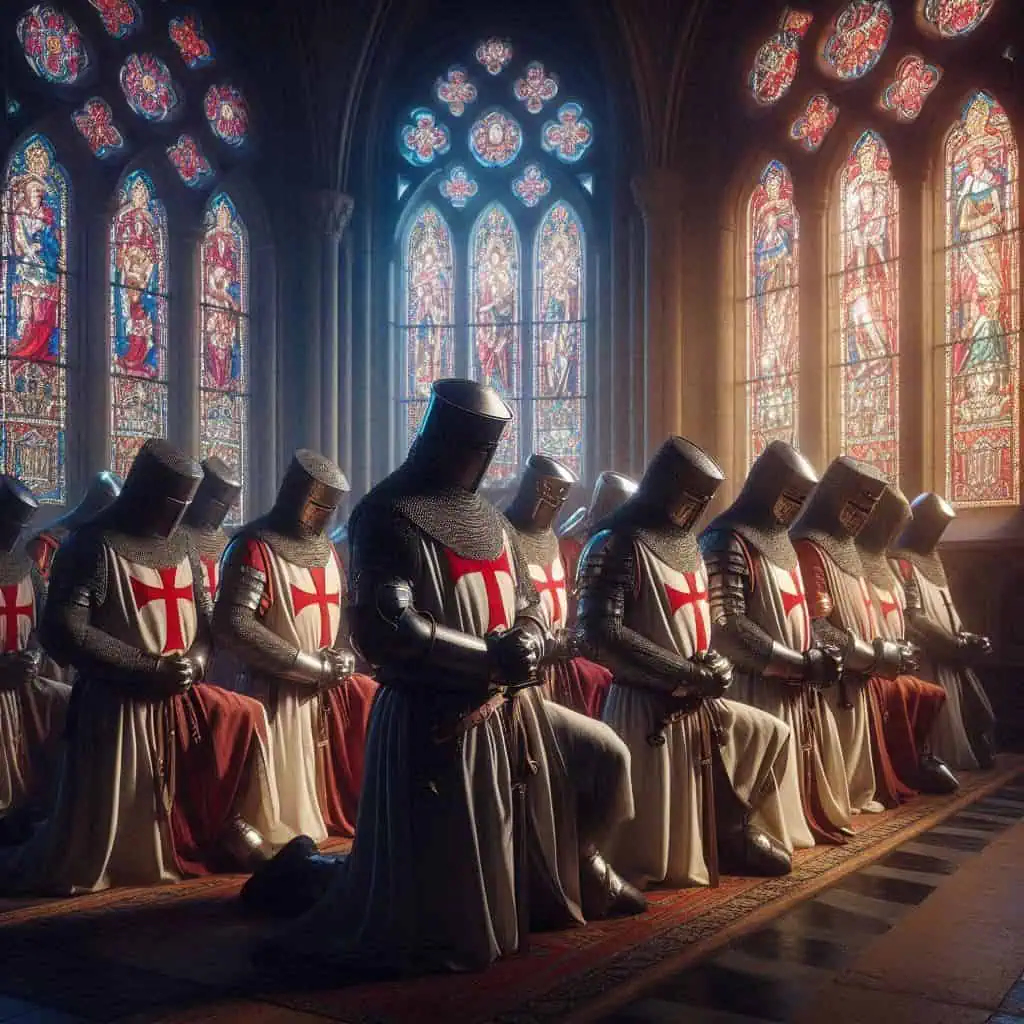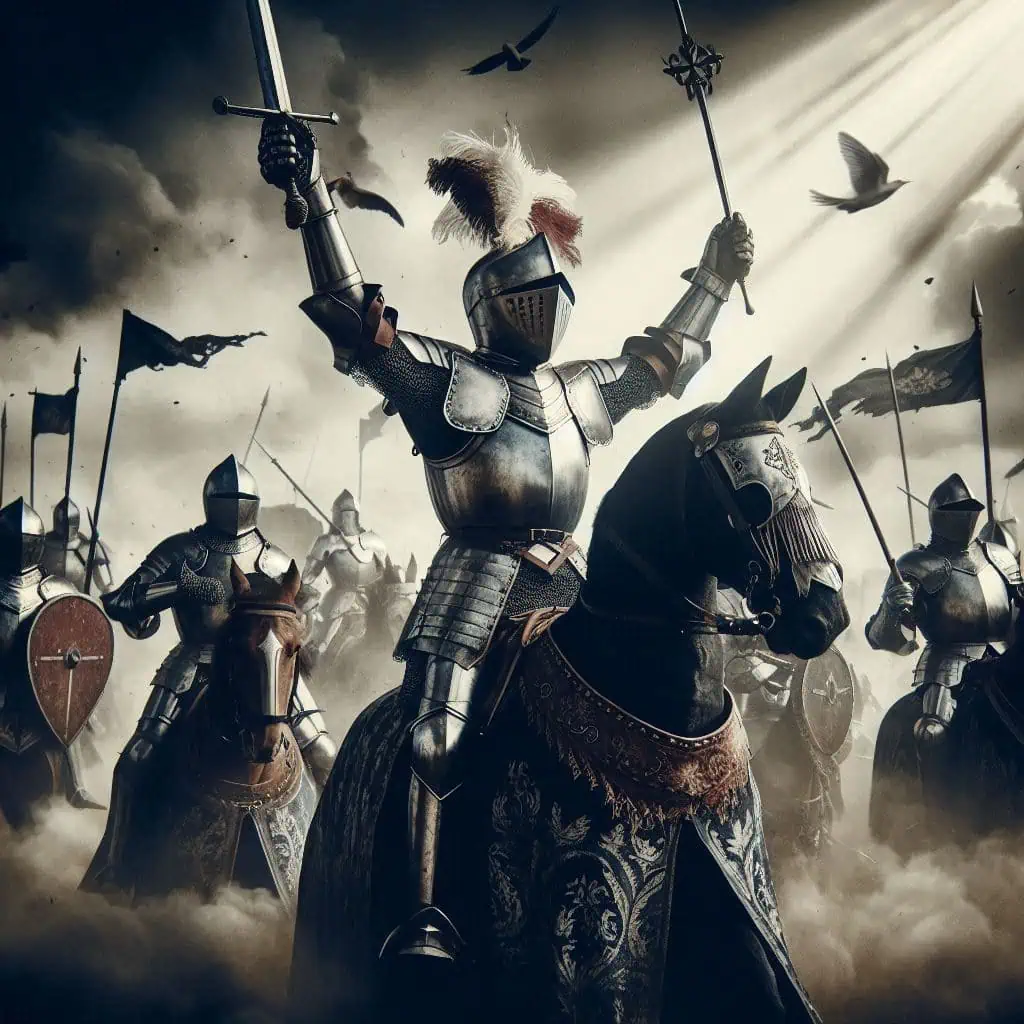The Knights of the Round Table are among the most enduring figures of Arthurian legend, celebrated for their heroism, loyalty, and unwavering commitment to the Code of Chivalry. These legendary warriors—including Sir Lancelot, Sir Galahad, and Sir Gawain—served under King Arthur in the mythical court of Camelot. Their tales, from the pursuit of the Holy Grail to epic battles for justice, have shaped centuries of medieval literature, folklore, and modern fantasy. Rooted in the ideals of honor, courage, and equality, the story of the Round Table continues to captivate audiences around the world.

The Round Table itself was more than just a symbol—it represented equality among knights, with no head of the table to signify rank or superiority. This revolutionary idea reflected the values of justice, brotherhood, and unity that King Arthur sought to instill in his court. Each knight swore an oath to uphold the principles of knighthood, defend the innocent, and remain true to their moral code. Through centuries of storytelling, the Knights of the Round Table have come to embody the spirit of medieval chivalry and continue to influence modern interpretations of heroic ideals in books, films, and games.
The Code of Chivalry: Values of the Knights of the Round Table
The Knights of the Round Table were bound by a strict Code of Chivalry, a moral and ethical standard that governed their every action. According to legend, only those knights who most faithfully embodied the virtues of honor, loyalty, courage, and justice were granted a seat at the Round Table. King Arthur himself selected only those deemed to be of the highest chivalric order, making a place at the table a rare and prestigious honor. Earning such recognition was no easy feat—even for the bravest of knights. Over the centuries, various writers chronicling the Arthurian legends have outlined what is believed to be the original chivalric code followed by these legendary heroes.

Code of Chivalry | Medieval Knights’ Rules of Honor and Valor
Although the legends of King Arthur were written during the Middle Ages, his fabled existence is believed to have predated that era—likely rooted in the post-Roman or early medieval period. Within these enduring legends, a formal Code of Chivalry was established for the Knights of the Round Table. This code outlined the moral and ethical standards expected of each knight, emphasizing virtue, honor, and justice. Among the key tenets of chivalry were:
To never commit murder
To show mercy to those who seek it
To avoid fighting for personal gain or over petty disputes
To remain loyal and never commit treason
To offer aid and protection to ladies, gentlewomen, and widows
To never lay down arms, even in times of peace
To defend the weak and innocent with full strength
To refrain from attacking fellow knights
To fight courageously and, if necessary, die for the safety of one’s country
To uphold and practice religious devotion faithfully
This chivalric code not only defined the character of Arthur’s knights but also set the foundation for the broader ideals of medieval knighthood throughout Europe.

Winchester Round Table: Arthurian Legend and Medieval History
In medieval times—and continuing into modern scholarship—it has long been speculated that Camelot, the legendary castle of King Arthur, was located near what is now modern-day Winchester. This theory gained renewed attention in the latter half of the 20th century when a remarkable medieval table was discovered in Winchester, featuring the names of knights inscribed around its edges. Originally dated to the 15th century, more advanced dating techniques have since placed its origin closer to the 13th century. While the table is undeniably extraordinary, researchers believe it was likely crafted during the reign of King Edward I, who was known for his fascination with Arthurian legends. One of the most intriguing features of this table is the detailed list of knights’ names carved along its border, offering a tangible connection to the mythic stories of the Knights of the Round Table.

<
Names Inscribed on the Winchester Round Table
The Winchester Round Table features the name of King Arthur along with 24 other knights, all inscribed around its border. These names represent some of the most famous figures from Arthurian legend and the Knights of the Round Table. Starting with King Arthur himself, the knights inscribed include:
- Sir Galahad
- Sir Lancelot du Lac
- Sir Gawain
- Sir Percivale
- Sir Lionell
- Sir Tristram de Lyones
- Sir Gareth
- Sir Bedivere
- Sir Bleoberis
- Sir Lacotemale Taile
- Sir Lucan
- Sir Palomedes
- Sir Lamorak
- Sir Bors de Ganis
- Sir Safer
- Sir Pelleas
- Sir Kay
- Sir Ector de Maris
- Sir Dagonet
- Sir Degore
- Sir Brunor le Noir
- Sir Lebius Desconneu
- Sir Alymere
- Sir Mordred

How Many Knights Were at the Round Table?
Different Arthurian legends offer varying accounts of how many knights sat at the Round Table alongside King Arthur.
- Didot-Perceval, writing in 1225, claimed this number to be 13!
- Robert De Boron’s work in 1195 put it at 50!
- Jean D’Ouremeuse’s book in 1350 claimed that 60 knights were seated at the table!
- Another 12th-century version of the legend placed this number as high as 1600!
- Vulgate’s Merlin claimed that there were a total of 250 Knights of the Round Table. In all, the number as cited in various versions of the legend has ranged from 13 to 1600.
Sir Gawain: The Exemplary Knight of the Round Table
Myths and legends flourish not only around King Arthur but also his most trusted knights—chief among them, Sir Gawain. As one of the most renowned members of the Knights of the Round Table, Sir Gawain is celebrated in countless medieval tales for his unwavering bravery, deep sense of chivalry, and richly layered character.
He is portrayed as the ideal knight in these stories, and his valor was unmatched among King Arthur’s knights. His name in Welsh means the “Hawk of May” and has also been associated in Welsh mythology with the solar god. This is reasserted by the curious trait of Sir Gawain’s strength, as recounted in some fables, according to which his power reached its peak when the Sun was high at noon and waned as the hours moved toward sunset.

Sir Lancelot: The Most Renowned Knight of the Round Table

Knights of the Round Table Summary
The Knights of the Round Table were an elite group of warriors who served the legendary King Arthur. Seated around a perfectly round table—symbolizing equality—these knights were regarded as the most honorable and valiant men in the kingdom. Chosen by the King himself, they stood as paragons of chivalry, loyalty, and courage. Numerous fables and medieval legends recount the adventures and moral challenges faced by these knights, many of which have endured through the centuries. Among the most notable figures were Sir Gawain and Sir Lancelot, each becoming central characters in iconic tales that continue to define the legacy of Arthurian legend.
Who were the Knights of the Round Table?
The Knights of the Round Table were legendary warriors who served King Arthur in Arthurian legend. They upheld ideals of chivalry, bravery, and loyalty, and were central figures in the quest for the Holy Grail.
Why was the Round Table important?
The Round Table symbolized equality among Arthur’s knights. Unlike traditional seating, it had no head, emphasizing that all knights were of equal status in King Arthur’s court.
How many Knights of the Round Table were there?
The number varies depending on the source, but most legends list between 12 and 150 knights. Famous members include Sir Lancelot, Sir Gawain, Sir Galahad, and Sir Percival.
What is the Holy Grail and why did the knights seek it?
The Holy Grail is a mystical object, often described as the cup used by Jesus at the Last Supper. The knights sought it as a divine mission representing spiritual purity and redemption.
Who was the most famous Knight of the Round Table?
Sir Lancelot is often considered the most famous. Known for his strength and skill in battle, he was also romantically linked to Queen Guinevere, which ultimately led to the fall of Camelot.
Is the story of the Knights of the Round Table historical?
The stories are rooted in medieval literature and legend, not verified history. However, they reflect the ideals of medieval knighthood and may be inspired by historical figures or Celtic mythology.
What virtues did the knights follow?
The knights adhered to the Code of Chivalry, which included courage, honor, courtesy, justice, and readiness to help the weak. These values defined their conduct in both battle and court.
